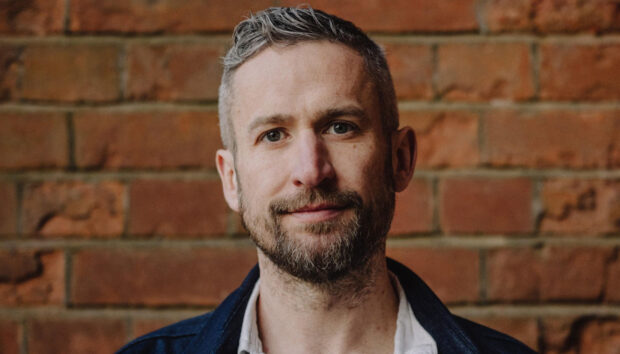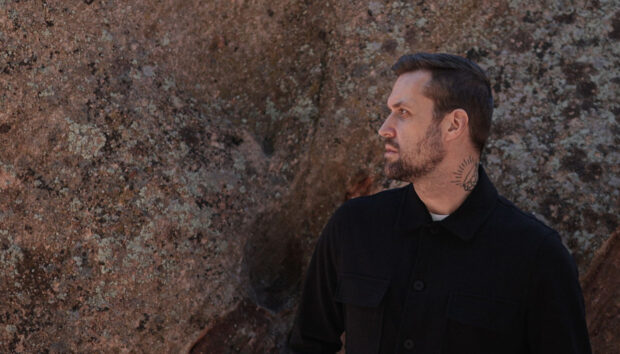
Whether you’re an experienced musician, or just starting out, sitting down to write a song can be a daunting mission. There are a hundred ways to begin, and sometimes it’s difficult to know where to start. The most memorable songs may seem simple, but the writing process behind them may have been more complex than you realize.
Artists can take weeks or even longer to craft a song that even slightly resembles the final version. There are so many elements to consider; lyrics, hooks, grooves, chords, and melody to name just a few. The whole process can seem intimidating, but don’t be discouraged. As you gain more experience, you may find yourself experimenting with different starting points or developing your own tricks and techniques. Remember that every successful songwriter has felt frustration as they take their first songwriting steps, and it takes time to master the craft.
Here are some surefire ways to unclog the creative process and effectively start a song.
Learn how to start a song:
- Use references for inspiration
- Start with a song title
- Start by building a groove
- Use inspiring tools and sounds
- Collaborate with other songwriters
Starting one of your first songs? Use free samples and sounds included in KOMPLETE START from Native Instruments.
1. Use references for inspiration
One of the best ways to learn how to start writing a song is to take a somewhat analytical approach, researching reference songs and pulling them apart to see what makes them tick. There will undoubtedly be songs and artists that you admire, so take cues from your favorites and figure out why these songs are successful.
The process of analysis can be a tricky one if you’re not used to critical listening. However, once you’ve had a few tries you’ll find that your ear becomes attuned to picking out musical themes, song structure, melody, lyrics and instrumentation.
Here’s a few ways to use other song references for inspiration:
- Listen to songs in a similar genre to the one you’re writing in, and take note of elements that you like, such as chord progressions, melody lines, or lyrics.
- Try to identify the emotions or themes that the songs you’re listening to evoke, and use those as inspiration for your own lyrics or melodies.
- Experiment with using different chord progressions, melodies, or rhythms from the songs you’re listening to, but put your own spin on them.
- Analyze the structure of the songs you’re listening to, such as verse-chorus-bridge, and use that as a starting point for your own song structure.
There are some tools you can use to help you critically listen to song references and get inspiration. TheoryTab can help you visualize chord progressions and melodies. Music Rebalance in iZotope RX audio cleanup plug-in can pull apart the audio of a track by intelligently identifying vocals, bass, percussion, and other instruments in a mix, allowing you to isolate them to hear them separately.
2. Start with a song title
Having a title in mind before you start to write a song can give you a solid direction to write towards. It can be a specific idea, a familiar turn of phrase or unusual viewpoint that you want to explore throughout the song.
Alternatively, try using a single word that cleverly captures the overall mood or theme of the song: think “Rehab” or “Footloose.” Starting with a title can also assist as you write the rest of the lyrics, as explained in this iZotope tutorial on writing to a title; you can hang a song structure or use the title as a guide to follow. Titles can give you rhythm, motif, and narrative before you even start writing.
A popular technique is using verse lyrics to work towards an end goal of singing the title as part of the chorus. Country and pop music employ these methods often, so analyze songs in those genres to see how title, verse lyrics and chorus hooks complement one another. Britney Spears’ “Work Bitch” is a great example, where she repeatedly spits provocative questions, answering them with a song title riposte.
3. Start by building a groove
Creating a strong, infectious groove can be one of the best ways to start a song. A memorable repeating riff will keep people listening, dancing and hopefully become an earworm through repetition and recognition. At first, don’t worry about the structure of the rest of the song, just stick to experimenting with various rhythms, riffs, and instruments using your DAW or a looper pedal.
Consider how the different instruments can complement one another. The whole idea here is to create a loop that you can use to try out other musical ideas; structures, melodies and lyrics. Once you want to progress beyond your initial idea, be careful not to get stuck in the rut of looping the same groove over and over again without variation, as this can quickly become tiresome for the listener. One simple, yet effective groove can be reworked throughout the rest of the song, but keep things fresh by using different instruments, applying audio effects or changing the vocals that sit on top of the groove.
There are many ways to write a groove when writing a song. Some common methods include:
- Using a repetitive drumbeat as the foundation of the groove
- Playing with syncopation, which is the accentuation of notes that fall between the beats
- Using a bassline to provide a steady pulse and create a sense of forward motion
- Experimenting with different time signatures, such as 4/4 or 3/4
- Combining different rhythms and grooves from different genres or cultures
Take a listen to how Red Hot Chilli Peppers change up their groove and use various vocal rhythms throughout “Give It Away.”
4. Use inspiring tools and sounds
The tools you use to write and produce your music can have a big impact not only on the final sound of your song, but also the journey you take to get there. Experiment with different instruments, software, samples and plugins. Find the ones that inspire you the most and use them as exciting song-starters.
Alternatively, choose an instrument that you’re less familiar with, or fire up a new sample library and explore the possibilities. Even within tools and sample libraries that you use regularly, there may be treats to be discovered.
KOMPLETE 14 has an extensive library of instruments that you can design, combine, and transform to create new beginnings to your songs. Listen to the sounds of KOMPLETE 14 in action below.
And once you have a few instruments selected, consider adding effects like reverb, flanging, or distortion to further define your sonic theme for your song. Sometimes, all it takes is a small spark of inspiration to get your creative juices flowing, even if that element doesn’t end up being used in the final song.
5. Collaborate with other songwriters
Getting together with other musicians to create a song as a collective can be the ideal way to begin a song, and you’ll gain fresh perspectives and input along the way.
It’s certainly a successful formula for legendary songwriting partnerships Benny & Bjorn, Lennon & McCartney and Hall & Oates. In fact, peek at the credits of many recent pop songs and you’ll often find dozens of contributors.
Collaboration is an effective approach as you can bounce ideas back and forth, gain experience, motivate one another and share musical knowledge. It’s important to remain open-minded when collaborating, not only when it comes to responding to other people’s ideas, but also to fearlessly presenting your own. Be ready for honest discussion and feedback.
The traditional method of songwriting collaboration is writing in person together. By meeting in person, you can bring your ideas and instruments to start your song. That face-to-face time can be a valuable asset when you’re just beginning your songwriting journey together. Alternatively, it’s now possible for songwriters to collaborate remotely. Platforms like Google Docs and Dropbox allow multiple people to work on the same document simultaneously, regardless of their location.
Another way to collaborate is for each songwriter to work on their own first and then share their ideas with the other songwriters, who can then add their own input.
A bonus tip for collaborating: save each version of your song ideas as they develop. That way, you can go back to different versions together in case you liked the way something sounded previously.
Start your songwriting journey
Songwriting is an inventive and often challenging process, but with the right techniques and a determined mindset, anyone can master the art. The methods above are effective song-starting springboards to help you get into a creative groove, but there’s so much more to songwriting than just getting started. Remember to stay open to new ideas, and to always strive to improve your craft. Keep in mind that the writing process takes time, effort and most importantly, practice.
Don’t be discouraged if you lose your way during the journey, as there is lots more songwriting advice out there. We’ve even got some effective tips on how to finish up your song, once you’re happy with your creation. And if you haven’t already, start experimenting with 2,000 studio-quality sounds, 16 pro-grade synths and sampled instruments, and more in your songs with KOMPLETE START for free. Happy songwriting!















